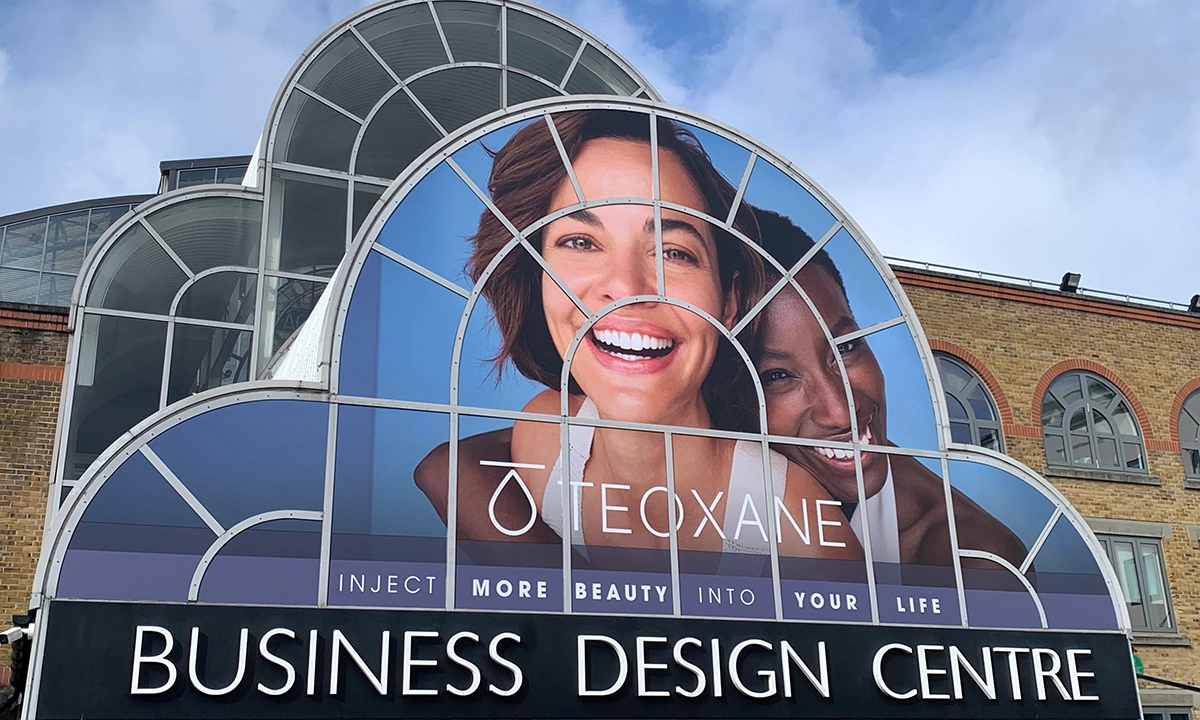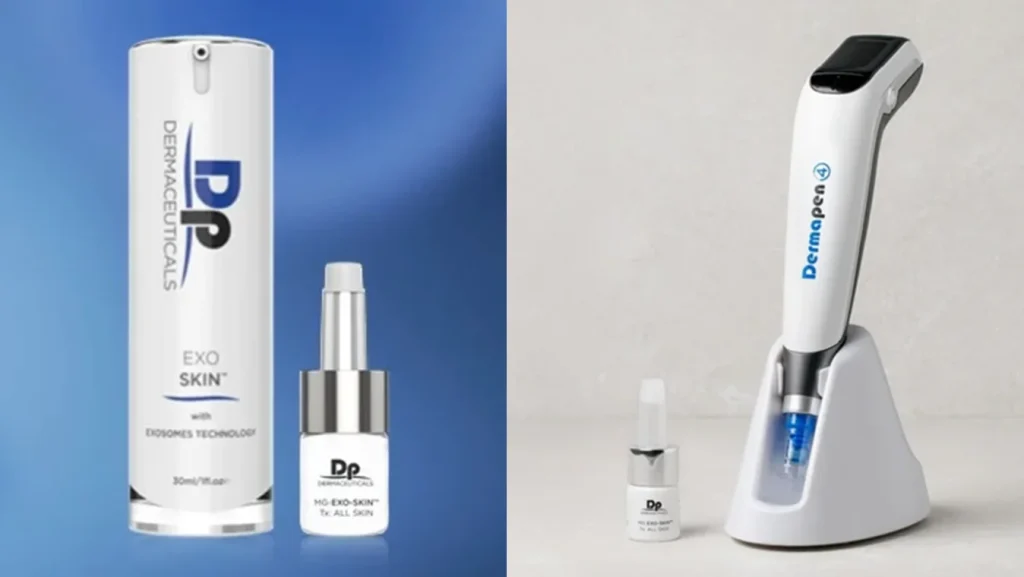
In March 2024 the Aesthetics Conference and Exhibition (ACE), the UK’s leading non-surgical aesthetics event, was hosted in London. This event brought together practitioners, stakeholders, opinion leaders, healthcare professionals (HCPs), leading companies and manufacturers, as well as a few of our own team members to discuss and shape the industry and its trends. The industry is in a dynamic state, with both rapid growth and a range of innovations honing in on specific consumer needs. As of November 2023 around 9.2 million in the UK people had a beauty treatment or had considered having a treatment in the last twelve months. And new offerings such as skin boosters (injectables that target the improvement of skin texture) are already being offered by 1 in 5 aesthetic clinics in the UK.

Our Senior Consulting Manager Margarita Svarceva and Consulting Analyst Sarah Westedt had the opportunity to attend the conference to connect with fellow industry colleagues and clients. They attended an array of engaging panel discussions, workshops and interacted with a diverse showcase of exhibitors and their products. They were able to discuss the latest trends and share experiences and industry knowledge with experts, focusing on new developments. They found that consumers are looking for, and brands are looking to deliver, a deeper, more tailored aesthetic experience that is effective, with minimal downtime, and that produces natural looking results. Furthermore, this is being achieved through increased collaboration between industry and HCPs.

Patients are look for natural-looking results. This is a sharp divergence from previous trends such as the “insta face” which, inspired by social media (named after Instagram), potentially involved drastic changes to the face. The “insta face” aimed for a plump appearance, high cheekbones and full (to overfilled) lips to achieve a youthful effect. In contrast, many patients are now moving towards embracing their own looks and using treatments to enhance and “tweak” them, rather than changing in dramatic ways. In line with this is an increased focus on healthy ageing instead of anti-ageing. HCPs can help guide patients and support them in targeting specific concerns while ensuring the results blend with the patient’s features.

One way this change is being driven, is through encouraging the body’s own production of (mainly) collagen, elastin and fibroblasts to target signs of ageing or skin texture, as well as achieve healthier skin overall. This biostimulation-focused approach is being highlighted throughout all product and treatment categories, from lasers, microneedling or mechanical devices, to nutrition and supplements, with treatments targeting both the face and the body. Aesthetic injectables are not exempt from this. “Classic” fillers are made using hyaluronic acid. They have a gel-like substance, which is used to add volume, lasting 3-12 months. While these continue to be relevant, brands highlight their biostimulating offerings. For instance, all major filler lines now offer a “skin booster”, such as Profhilo, manufactured by IBSA. These hyaluronic acid-based products do not add volume. Instead, they are injected into the skin on the face and body to encourage the body’s production of collagen. They give patients a “glow” from within, as well as improve skin texture. Further, while some biostimulating fillers have been on the market for many years, a shift towards natural looks is quickly increasing their demand. Prominent examples in this category are Galderma’s poly-L-lactic acid-based Sculptra or Merz’s calcium hydroxylapatite-based Radiesse, which both offer results for up to 2 years. Innovative fillers are also combining multiple ingredients to achieve immediate results, while providing long-term stimulation for longevity. For instance, Allergan’s HArmonyCa combines calcium hydroxylapatite and hyaluronic acid to achieve this effectOne way this change is being driven, is through encouraging the body’s own production of (mainly) collagen, elastin and fibroblasts to target signs of ageing or skin texture, as well as achieve healthier skin overall. This biostimulation-focused approach is being highlighted throughout all product and treatment categories, from lasers, microneedling or mechanical devices, to nutrition and supplements, with treatments targeting both the face and the body. Aesthetic injectables are not exempt from this. “Classic” fillers are made using hyaluronic acid. They have a gel-like substance, which is used to add volume, lasting 3-12 months. While these continue to be relevant, brands highlight their biostimulating offerings. For instance, all major filler lines now offer a “skin booster”, such as Profhilo, manufactured by IBSA. These hyaluronic acid-based products do not add volume. Instead, they are injected into the skin on the face and body to encourage the body’s production of collagen. They give patients a “glow” from within, as well as improve skin texture. Further, while some biostimulating fillers have been on the market for many years, a shift towards natural looks is quickly increasing their demand. Prominent examples in this category are Galderma’s poly-L-lactic acid-based Sculptra or Merz’s calcium hydroxylapatite-based Radiesse, which both offer results for up to 2 years. Innovative fillers are also combining multiple ingredients to achieve immediate results, while providing long-term stimulation for longevity. For instance, Allergan’s HArmonyCa combines calcium hydroxylapatite and hyaluronic acid to achieve this effect.

Patients are looking for maximised convenience through reduced downtime and minimised discomfort. They want the best results possible, while aiming for the least invasive option. As a result, HCPs are focusing on the ease of procedures, as well as how quick it can be to integrate into everyday lives and busy schedules. Traditionally, beauty treatments required time to allow for reactions and symptoms to calm down. Although many new treatments allow patients to leave the clinic on the same day, procedures such as lasers or microneedling still cause skin irritations for multiple days. Both lasers and microneedling leverage a mechanism of “injuring” the dermis to create improvements through wound healing responses. During microneedling, tiny needles are used on the dermis. Through the creation of tiny wounds the skin’s healing process encourages a heightened production of collagen, leading eventually to healthier skin. And in ablative laser resurfacing the outer layer of the skin is removed through a laser beam and the underlying layers heated up. After traditional laser resurfacing 7-10 days are needed to recover, compared to 1-3 days for microneedling.
Reducing this downtime, as well as the associated pain, has been the focus of many procedures presented at ACE. For instance, AviClear emphasises how their acne-focused laser significantly reduced recovery time and was found to be not painful by the majority of patients. Further, some laser products and microneedling devices are integrating cooling technology for the same purposes. One example here is VirtueRF’s microneedling device, the first multi-pulsed microneedling radiofrequency platform with a patented advanced cooling system. Many HCPs highlighted the integration of LED masks, like the one offered by Dermapen, post-treatment to aid in the healing process. These masks can help the skin heal through the use of different wave lengths of light that penetrate the dermis to stimulate its healing process further.

One ingredient which attracted extensive discussion at ACE was the use of exosomes in aesthetic treatments, which can help speed-up healing and treatment recovery. Exosomes are nanoparticles released by most cells in the human body, which in the skin are released from epidermal keratinocytes and transported to the dermis. They contain various lipids, proteins, amino acids, peptides and growth factors, which combined affect the skin, and are known for being well tolerated, targeting specific areas, as well as permeating tissue. Exosomes offer a wide variety of applications in aesthetic procedures, from skin care to their integration with devices. Exosomes can aid with wound healing, barrier repair or tissue growth, providing a benefit similar to stem cells. Through this, they reduce downtime, restore skin health and produce collagen after procedures, as well as encouraging the body’s own regeneration. Further, they can even stimulate hair growth. HCPs are divided between the effectiveness of plant-derived, marine-derived and human-derived exosomes, with no conclusive scientific evidence yet for the superiority of any side. They agree, however, on the benefits of integrating them into their treatments. One example amongst many, was the use of exosomes with the Dermapen microneedling device, which helps them penetrate deeper. After the use of the Dermapen, a specially formulated exosome serum is applied to aid in regeneration. It is expected that exosomes will be used even more actively by the aesthetics industry in the coming years, for all the benefits that they bring.

The above insights already show that HCPs are looking for a holistic approach to better target patients’ concerns. Through a combination of different treatments, HCPs personalise and fine-tune their results to each patient, leading to improved and more natural-looking results. A holistic approach using multiple avenues and treatments can achieve results similar to those of invasive procedures, with less downtime and discomfort, as well as provide more convenience. This encourages a collaborative approach across treatments. HCPs and industry, who profit from increased revenue, as well as patients, who see enhanced results, can benefit from the integration of multiple procedures. An example of this could be: starting with a HydraFacial to improve skin health and prepare the skin for treatment, (HydraFacial is a device which simultaneously provides exfoliation, cleansing, extraction and hydration to the face). Next, a microneedling device combined with exosomes or an LED mask could be used to begin targeting signs of aging. Finally, dermal fillers are used as a last step to fine-tune the results.

There are no clear protocols in place yet, but HCPs are discovering their preferred combinations and are sharing this knowledge amongst their community. Benefits include improving results and revenue, while drawbacks include more potential sources of skin irritation. The industry has an opportunity to support HCPs as they develop their preferred protocols. For instance, Neuavia offers protocols (called smart combination therapy protocols) to help HCPs combine their fillers with devices. However, being able to provide integrated plans and trainings for multi-procedure treatments based on different manufacturers’ products is likely to give companies in the industry a competitive advantage and offer an incentive for collaboration.
Sector & Segment has vast experience in the dermocosmetic and aesthetic injectable sectors, providing our clients with tailored research and analysis. Our experts can develop HCP or patient segmentations, investigate patient journeys and challenges, dive into the competitive landscape or provide a quantifiable model of the market. Using our in-depth insights, we can help you refine your go-to-market strategy and position for specific customer segments.
For further information, don’t hesitate to contact us at info@sectorandsegment.com.